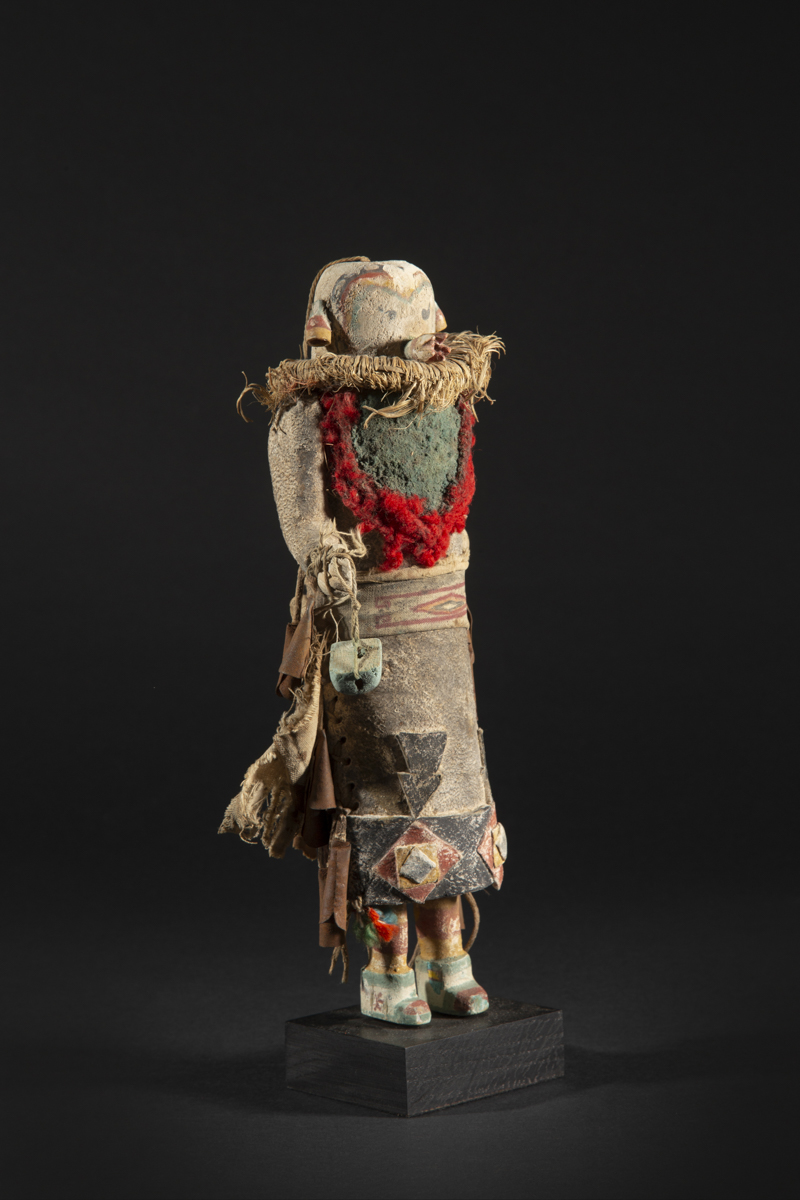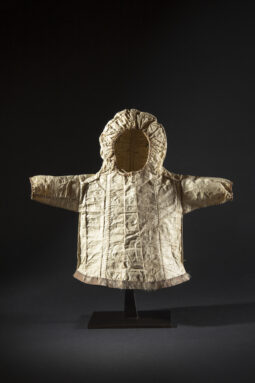North America | New Mexico
Katsina Doll
New Mexico
Kianakwe Kohan’ona Katsina
Zuni
Carved wood, piments, turquoise, fiber, wool, fabric
Circa 1900-1910
Height: 9 ¾ in. – 24.5 cm
Ex collection Jay C. Leff, Uniontown, USA
Ex collection Fenn Galleries, Santa Fe, USA
Ex private collection, Texas, USA
Kianakwe Kohan'ona Zuni Katsina Doll 24.5 cm / Galerie Flak
Price on request
Katsina dolls (or kachina) represent spirits or gods from the pantheon of the Pueblo peoples in the American Southwest. Given to children, Katsina dolls constituted a pedagogical tool allowing them to familiarize themselves with the spiritual world and perpetuating knowledge of the founding myths on which their society was based.
This ancient Zuni Katsina figure depicts either Kianakwe Kohan'ona (White Warrior of the East) or Kiamosona (the Kianakwe Chief).
The Kianakwe Dance takes place every four years and commemorates the mythical battle which occurred when the Zuni ancestors, in search of the middle of the world, encountered the Kianakwe.
According to Barton Wright (Patterns and Sources of Zuni Kachinas, 1989, p. 73), the Kianakwe people lived in large houses, wore long white robes, farmed large fields of corn and other crops. They were led by Tsakwaina Okya, a large woman warrior. The Zuni fought them for four days before the Kianakwe were routed.
This ancient Zuni Katsina figure depicts either Kianakwe Kohan'ona (White Warrior of the East) or Kiamosona (the Kianakwe Chief).
The Kianakwe Dance takes place every four years and commemorates the mythical battle which occurred when the Zuni ancestors, in search of the middle of the world, encountered the Kianakwe.
According to Barton Wright (Patterns and Sources of Zuni Kachinas, 1989, p. 73), the Kianakwe people lived in large houses, wore long white robes, farmed large fields of corn and other crops. They were led by Tsakwaina Okya, a large woman warrior. The Zuni fought them for four days before the Kianakwe were routed.
Explore the entire collection






























































